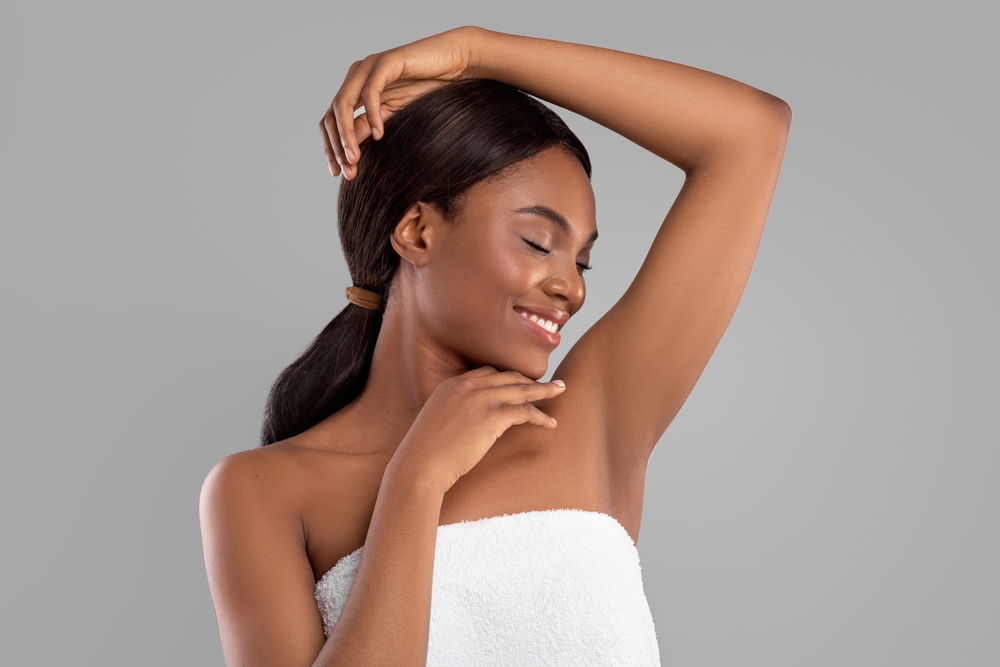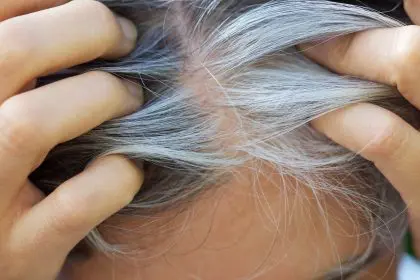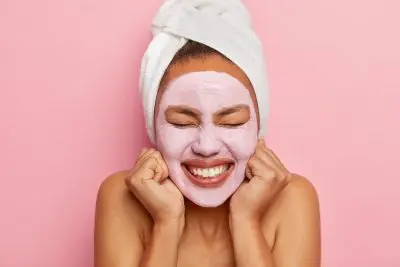Squeaky clean might be great for your kitchen counters, but that tight, stripped feeling after washing your face? That’s actually your skin crying for help. The quest for perfectly clean pores could be sabotaging your complexion in ways you never imagined.
If you’re battling persistent redness, unexpected sensitivity, or stubborn breakouts despite your dedicated skincare routine, the culprit might be hiding in plain sight—your cleanser. Over-cleansing has emerged as one of the most common yet overlooked causes of skin barrier damage.
Let’s dive into why being too zealous with your cleansing routine might be backfiring, and how you can restore your skin’s natural defenses for that healthy glow you’ve been chasing.
Understanding your skin’s protective shield
Your skin barrier isn’t just some beauty buzzword—it’s a sophisticated biological shield that keeps good stuff in and bad stuff out. This thin but mighty barrier consists of skin cells bonded together by lipids, forming a protective matrix that maintains moisture while defending against environmental threats.
When intact, this barrier helps your skin look plump, smooth, and radiant. It’s your first line of defense against pollution, bacteria, and UV damage. But unlike other parts of your body, you can actually see when this shield gets compromised.
The delicate acid mantle
Sitting atop your skin barrier is an even more delicate layer called the acid mantle—a slightly acidic film created by your skin’s natural oils mixed with sweat and beneficial bacteria. This acidic environment helps keep harmful microbes in check while allowing helpful ones to thrive.
Most harsh cleansers disrupt this acid mantle within seconds of application, temporarily throwing your skin’s pH balance into chaos. While occasional disruption isn’t a big deal, daily assaults from aggressive cleansing can prevent your acid mantle from properly reforming.
Signs your cleansing routine is doing more harm than good
How do you know if you’ve crossed the line from thorough cleansing to barrier damage? Your skin has ways of sending clear distress signals.
Sudden sensitivity to products you’ve used for years often indicates barrier disruption. Products that once felt fine may now cause stinging or burning sensations—not because the products changed, but because your compromised barrier allows ingredients to penetrate deeper than intended.
The deceptive tight feeling
That tight, “super clean” sensation after washing? Many people mistakenly interpret this as a sign of effective cleansing, when it’s actually a warning of barrier stripping. Healthy skin should feel comfortable and balanced after washing, not tight or squeaky.
This tightness occurs when cleansers remove too much of your skin’s natural oils, disrupting the lipid barrier that holds moisture in place. The immediate result might look matte, but your skin typically responds by overproducing oil hours later—creating a frustrating cycle of oiliness and dryness.
The double-cleansing dilemma
While double-cleansing can be appropriate for removing heavy makeup or sunscreen, this trendy technique has led many people with minimal makeup habits to unnecessarily overwash their skin.
The first cleanse removes surface impurities, but that second round often starts working on your skin’s natural protective elements. For many skin types, especially those prone to dryness or sensitivity, twice-daily double cleansing can rapidly deteriorate barrier function.
The morning cleanse misconception
One of the biggest cleansing myths involves the necessity of morning cleansing. Unless you’re extremely oily, your skin doesn’t accumulate enough dirt or oil overnight to warrant a full cleanse upon waking.
Rinsing with water or using an ultra-gentle cleansing option in the morning can preserve your barrier while still creating a fresh canvas for daytime products. This minimal approach often resolves mysterious morning dryness and redness.
Harsh ingredients masquerading as “deep cleaning”
Marketing often frames aggressive cleansing ingredients as beneficial, when they’re frequently the primary cause of barrier damage. Understanding these ingredients can help you make better choices.
The sulfate situation
Sulfates like sodium lauryl sulfate create that satisfying foam and cut through oil effectively—but often too effectively. These powerful surfactants don’t discriminate between makeup and your skin’s essential lipids, potentially removing both with equal efficiency.
While not everyone reacts negatively to sulfates, they’re particularly problematic for dry, sensitive, or mature skin types. The foaming action that creates that “clean” feeling is precisely what can compromise your protective barrier.
The pH problem
Many popular cleansers have alkaline pH levels that directly contrast with your skin’s naturally acidic environment. These high-pH formulas can disrupt your acid mantle for hours after cleansing, leaving your skin vulnerable to irritation and bacterial imbalance.
This pH disruption explains why some people experience increased breakouts despite using “acne-fighting” cleansers—the formula may be killing bad bacteria but also disrupting the skin’s natural defenses against future breakouts.
The surprising connection to aging
Here’s something that might surprise you—over-cleansing doesn’t just cause temporary irritation, it may actually accelerate skin aging. When your barrier function is chronically compromised, your skin faces increased oxidative stress and inflammation.
This constant low-level inflammation triggers enzymes that break down collagen and elastin, the proteins responsible for skin’s firmness and bounce. What started as an innocent attempt to get really clean skin could be contributing to premature fine lines and sagging.
The dehydration-wrinkle link
Damaged barriers can’t retain moisture effectively, leading to chronic dehydration. While dehydration doesn’t cause permanent wrinkles, it makes existing lines more noticeable and prevents skin from reflecting light in a youthful way.
Properly hydrated skin with an intact barrier appears more radiant and plump—often creating results that rival expensive treatments simply by allowing your skin to function as designed.
Rebuilding your barrier
If you suspect you’ve been over-cleansing, the good news is that your skin barrier can recover with the right approach. The key is simplifying your routine and focusing on restoration rather than intense treatments.
The cleansing reset
Start by evaluating your current cleanser. Ideal formulas have a pH between 4.5-5.5, cleanse without creating that tight feeling, and don’t contain harsh sulfates. Cream, oil, and balm cleansers generally preserve barrier function better than foaming formulations.
Consider cleansing for a shorter time, using cooler water, and being gentler with your application technique. Most facial cleansers only need about 20-30 seconds of contact to effectively remove impurities.
The recovery routine
After cleansing, focus on ingredients that support barrier repair. Ceramides, fatty acids, and cholesterol help rebuild the lipid matrix that holds your skin cells together. These ingredients essentially replace what harsh cleansing removes.
Niacinamide deserves special mention as a multi-tasking ingredient that helps repair barrier damage while regulating oil production and calming inflammation—making it ideal for recovery from over-cleansing.
The minimalist approach to healthy skin
Sometimes the path to better skin isn’t adding more products but doing less. Many dermatologists now recommend a “minimally disruptive” approach to cleansing that preserves your skin’s natural functions.
Strategic cleansing schedules
Consider whether you really need to cleanse twice daily. Many people find their skin improves dramatically when switching to a thorough evening cleanse and just a water rinse in the morning.
For those who exercise mid-day, rearranging your cleansing schedule around workouts rather than automatically cleansing morning and night can reduce the total cleansing load on your skin.
The makeup removal distinction
Create a mental separation between makeup removal and cleansing—they serve different purposes. Using a gentle makeup remover or micellar water before your actual cleanser allows you to use a gentler cleanser for the second step, rather than relying on a harsh formula to cut through makeup.
This approach ensures makeup is thoroughly removed without requiring a stripping cleanser that damages your barrier in the process.
The microbiome connection
The latest frontier in skin health research involves understanding how over-cleansing affects your skin microbiome—the community of beneficial bacteria that lives on your skin surface and contributes to barrier function.
Beyond clean to balanced
Each time you cleanse, you’re not just removing dirt but potentially disrupting this delicate ecosystem. Harsh cleansers can temporarily deplete beneficial bacteria while allowing opportunistic microbes to flourish.
Some newer cleansers now incorporate prebiotic ingredients that help support healthy bacterial balance. These formulations clean effectively while maintaining the microbiome diversity that contributes to resilient, clear skin.
Professional treatments and barrier health
Even professional treatments can contribute to barrier damage if timed poorly or stacked inappropriately. Treatments like chemical peels, microdermabrasion, and laser therapies intentionally create controlled damage to stimulate renewal.
The recovery window
While these treatments have their place, they require adequate recovery time to allow barrier restoration. Scheduling aggressive cleansing or exfoliation too soon after professional treatments compounds barrier damage and can lead to persistent sensitivity or inflammation.
Working with skincare professionals who prioritize barrier health ensures your treatment plan includes appropriate recovery periods and supportive care between more intensive procedures.
The bottom line? Your skin is remarkably self-sufficient when given the chance to function as designed. By shifting from an aggressive cleansing mentality to a barrier-supporting approach, you might discover that the key to clear, radiant skin isn’t scrubbing away its natural defenses but preserving the sophisticated protection system it already has.















